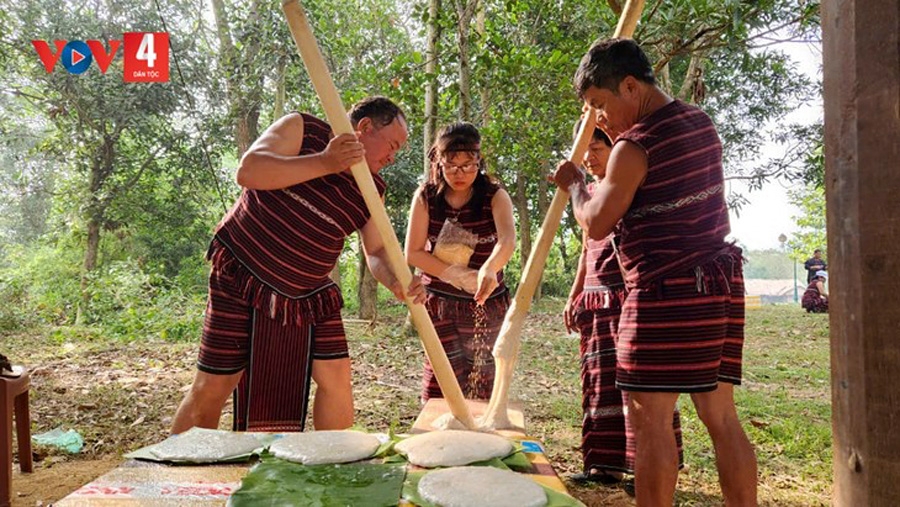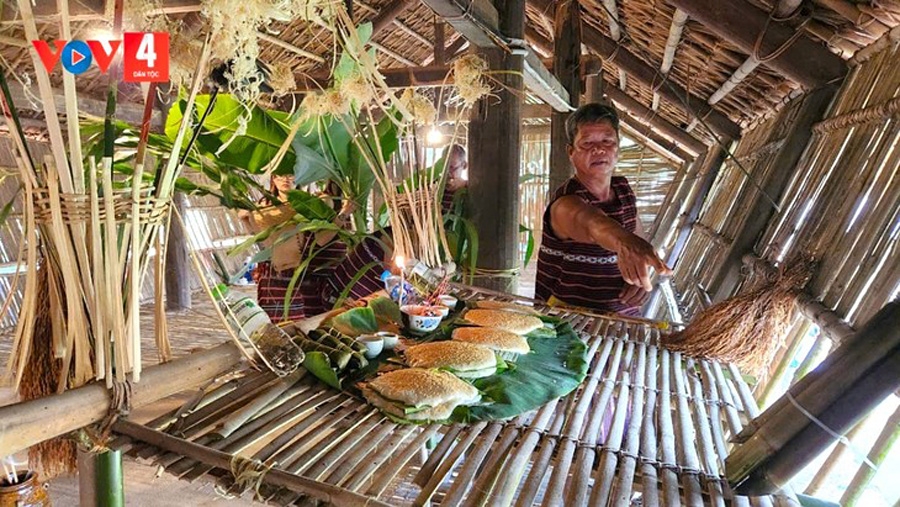Goddess of Rice worship ritual of the Cho Ro
VOV.VN - Vietnam’s Cho Ro ethnic group live mainly in Dong Nai, Binh Duong, Binh Phuoc, and Ba Ria-Vung Tau provinces, and their worship of the Goddess of Rice, Sayangva, reflects the harmony between humans and nature and people’s wish for a sufficient, happy life.

The Cho Ro worship Sayangva from the 15th to 30th of the third lunar month, after the rice harvest, to thank her for protecting their crops. As the Cho Ro live by doing farm work, the Goddess of Rice is their most revered and respected deity.
Nguyen Van Bien, an influencer in the Cho Ro community in Dong Nai province, says the Sayangva worship is carefully prepared, from collecting rice to preparing the offering.
“We start preparing for the ceremony a month in advance. We grill meat, steam rice in bamboo tubes, and distill liquor. We collect wild vegetables,” says Bien.
The villagers plant a tall Neu tree, which represents the harmony and connection between humans and gods. A Cho Ro man named Huynh Cong Danh explains that a Neu tree, made of bamboo, conveys people’s wishes and prayers to the gods.
“The worship of the Goddess of Rice is carefully organized. The Neu tree is planted at the center of the communal yard. It represents sunshine, rain, and crops and is painted black and white,” says Danh.
The Neu tree of the Cho Ro must have a straight body. The villagers peel off the bark to see the yellow wood underneath. The decorations hung on the Neu tree, which must be an even number, symbolize sufficiency and completion.
According to Cho Ro custom, the Neu tree is where the gods reside during the ceremony. To the top of the Neu tree is tied a large rice plant. Feathers of birds and chickens are glued to the tree, symbolizing strength, intelligence, and prosperity.
To the base of the tree are tied sacrificial animals such as chickens and pigs and several jars of liquor,
“We hang the rice on the top of the Neu tree. The jars of liquors are steps for the gods to climb on. We pray for good production and prosperous business,” says Danh.

According to locals, the sacrificial chickens and pigs are raised in the forest for the ceremony. The pig should be a wild boar in the forest, and it should weigh about 10 to 15 kg.
Next to the Neu tree is a table on which incense and other offerings are placed, says Danh.
“On the table are three bowls of rice topped with grilled meat and giầy cakes, a type of round, pounded, glutinous rice cake. We also burn aloe incense,” he further explains.
To begin the worship of the Rice Goddess, a group of Cho Ro people go to the field to invite her to the ceremony site. The summoners are married women over 40 years old, because the Cho Ro are matriarchal and women decide all affairs. However, the master of the ceremony is a man.
The procession of the rice spirit is joyfully welcomed by a resounding gong performance.
The master of the ceremony prays to invite the deities and ancestors to attend the ceremony and witness the sincerity of the villagers. He conveys the people’s gratitude to the gods for blessing them with peace and a bountiful crop and prays for their continuous support.
After the ritual, the festival begins. Everyone gathers around the Neu tree to dance and sing to the accompaniment of gongs, bamboo musical instrument, and jew’s harps.
“I hope that the next generation will uphold these traditions. I tell my children that no matter where they go to work, they should always return home to attend this festival,” a villager said.
The worship of the Rice Goddess Sayangva has great spiritual significance for the Cho Ro community. It enhances social unity and renews the connection between humans and nature.



